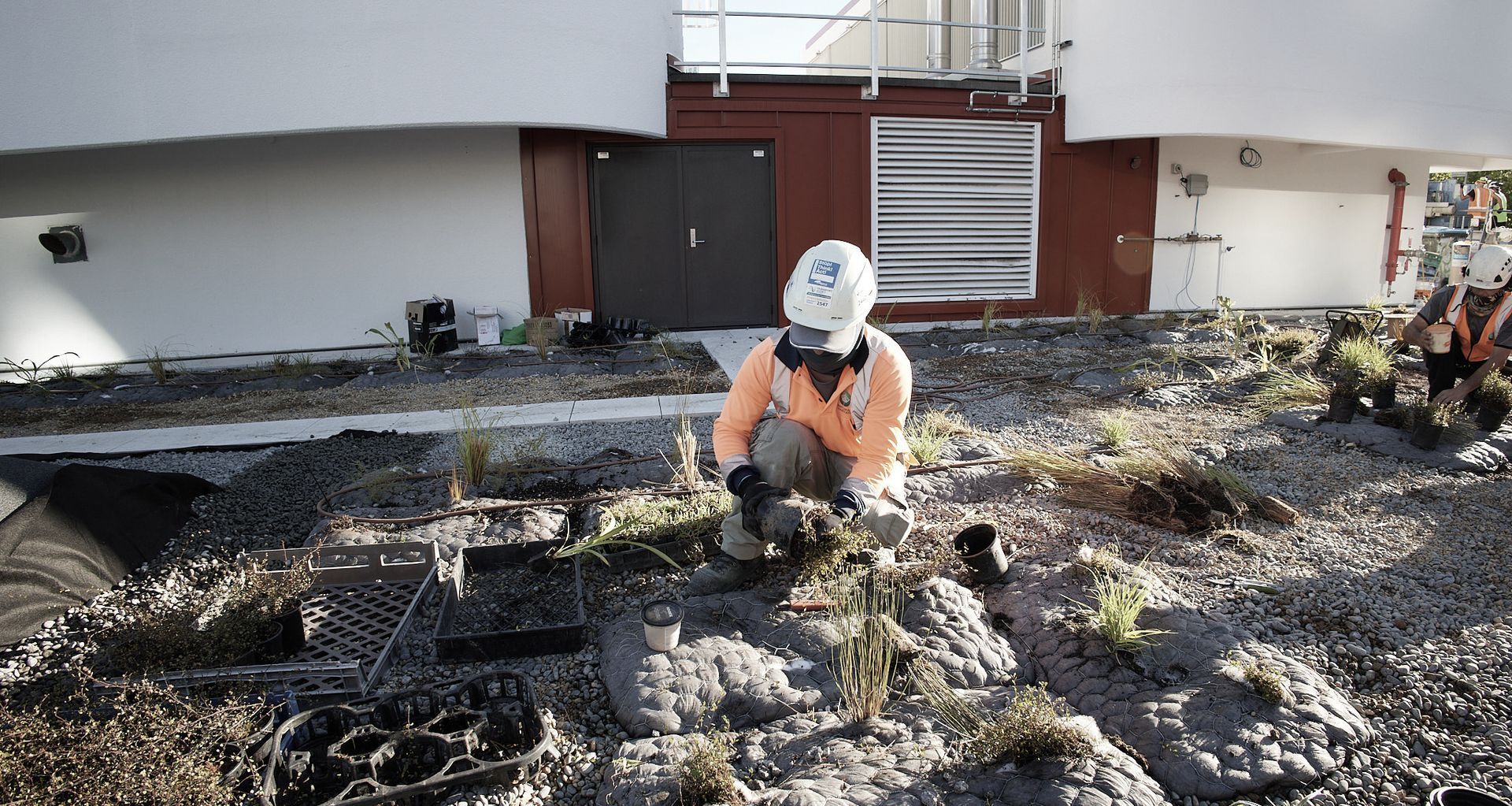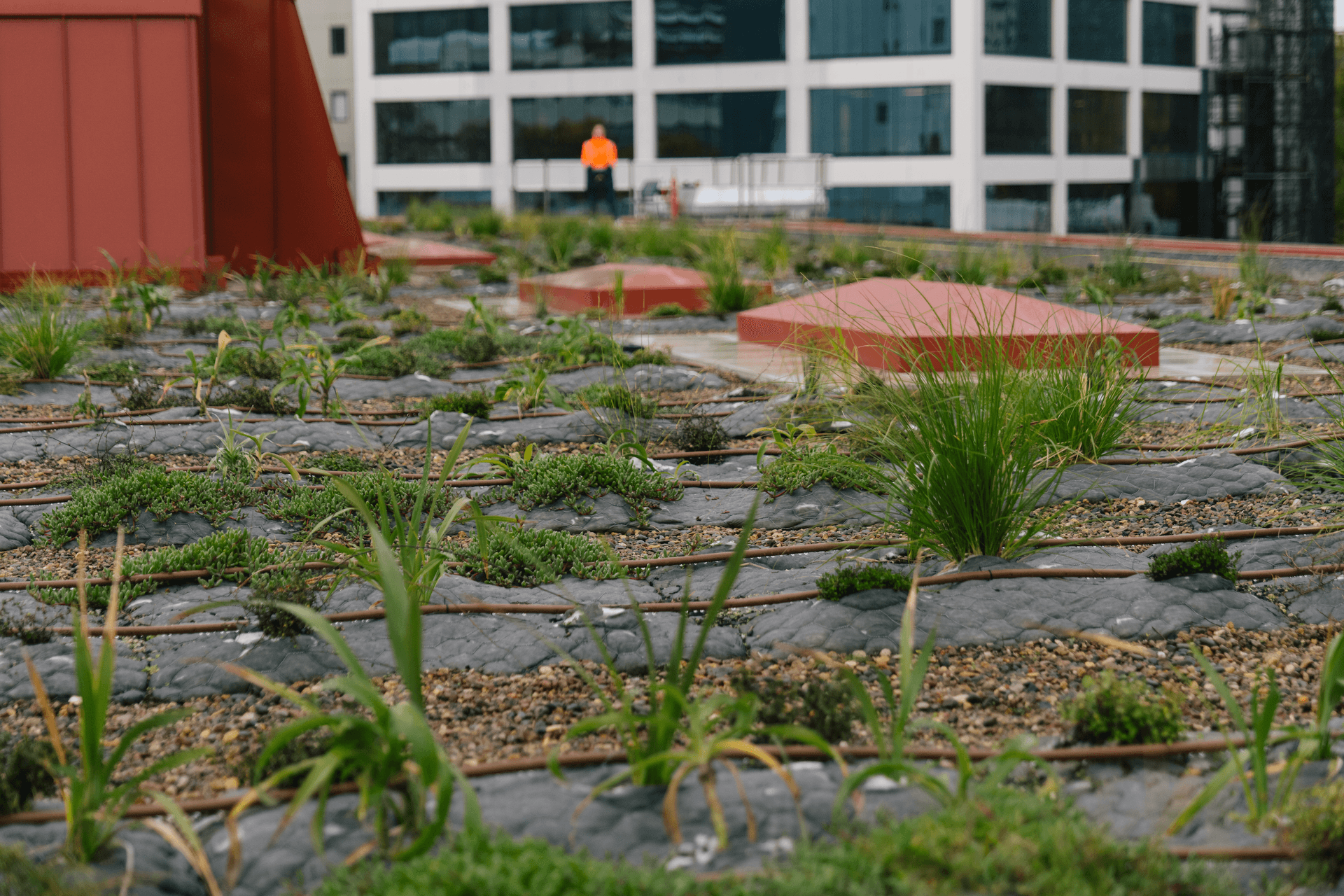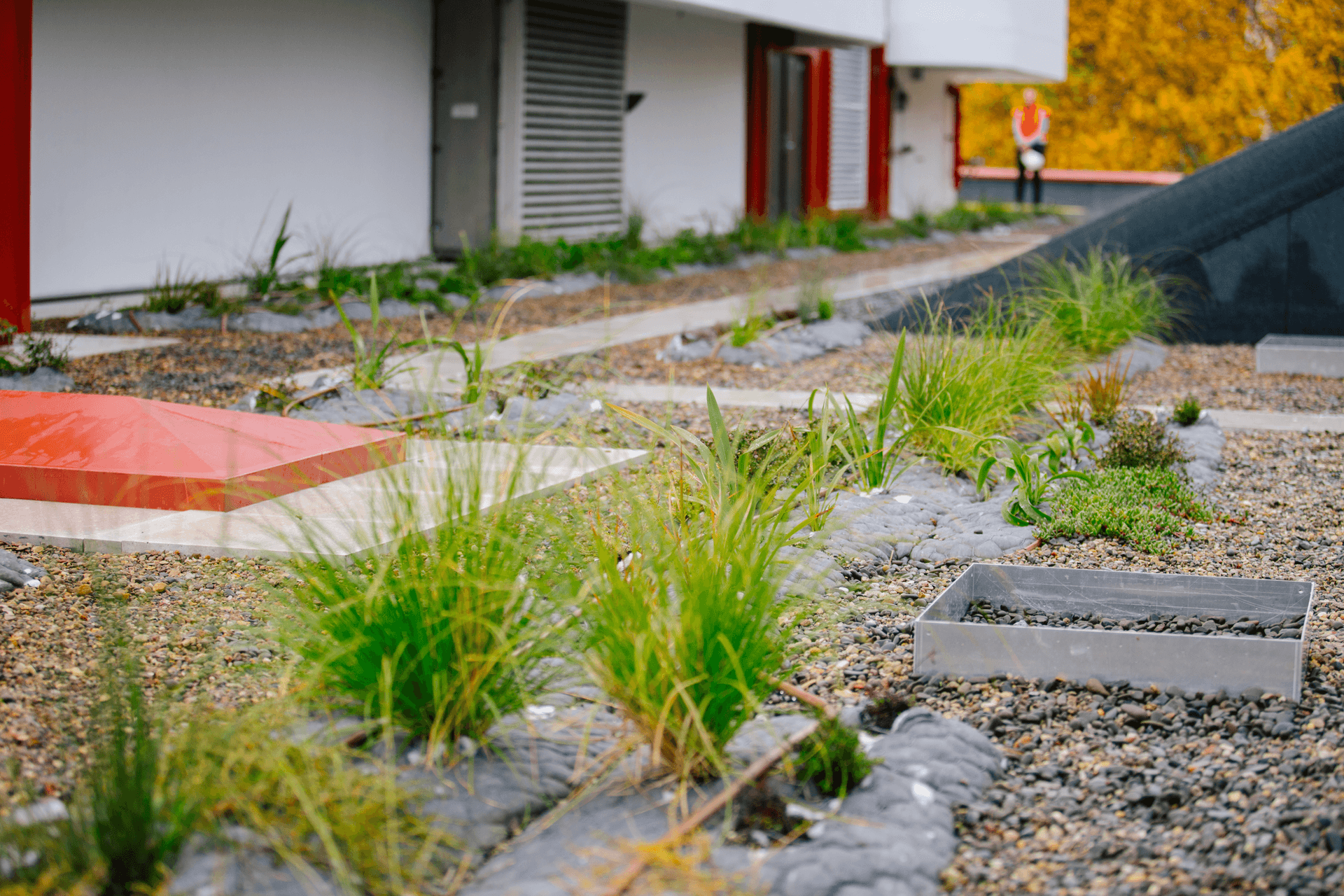Bringing green sanctuaries to the city
Written by
23 May 2022
•
3 min read

What is a green roof?
Green roofs are roofs that are partially or completely covered with vegetation and a waterproofing layer, and can be utilised to enhance over-roof views.
They can be added to new or existing buildings to add living, breathing architectural function – something Natural Habitats Landscapes is proud to play a part in by creating New Zealand’s largest green roof.
The country’s largest green roof
Covering a total roof area of approximately 860sqm, Natural Habitats installed 560 ‘Eco Pillows’ to the roof of Auckland City Library – with additional infrastructure across the whole roof to accommodate full coverage – making it the largest green roof in the country.
Starting in July 2021 with completion in April 2022, the project was a collaborative effort between the award-winning Natural Habitats team, Auckland Council and local iwi.
“The plant species and the design was chosen by iwi from the Tāmaki region,” says Tom McCarthy, Natural Habitats’ Auckland regional manager, with local Iwi also responsible for growing approximately 2,000 of the plants – accounting for 90% of the total.
“A selection of green species and brown species were chosen and the planting carried out in accordance with a tukutuku pattern which is like a checkerboard effect. Some brown plants were planted in certain locations and then green plants were planted in other locations.”

Sustainability at another level
Not only is the green roof a stunning addition to its city surroundings, it also offers many benefits to both humans and the environment.
“Green roofs mitigate stormwater runoff from the plants filtering and using the rainwater – meaning less runoff into the drains,” explains Tom. Natural Habitats’ Eco Pillow technology also lowers the chance of residual runoff that’s often experienced with standard roofing. “We really take care to make sure all of the media and the product is actually going to stay in place and not get blown away or washed away.”
Part of the media found inside the light-weight Eco Pillows is polystyrene, which the company recycles from waste disposal. Various ingredients are combined with this material and enclosed within the pillow.
“It’s the perfect blend of nutrients that the plants really need to thrive and survive. The pillows also help to lock in moisture, so you don’t have a lot of wastage from irrigation – we’ve developed this over the years to suit many environments and be practical for any development.”
Essentially living filters, plants capture and store air pollutants and water pollutants, helping in the fight against climate change thanks to their process of carbon sequestration.
“Having a green roof increases biodiversity in the urban environment, providing habitats for insects and different types of fauna, and also reduces noise,” adds Tom.

Suitable for all buildings
The unique lightweight composition of the Eco Pillows – which weigh around 20% of traditional green roof media – and their modular nature allows any building to benefit from a Natural Habitats green roof.
“The technology doesn’t require any additional engineering, so it can be accommodated in lots of different environments – it’s very versatile and customisable. Being modular, we can make them into different sizes, depths, and different shapes to fit the area,” says Tom. “We can consult from an early stage to establish the client’s needs and what they’re trying to get out of the project – certain plant species and what they want to include for biodiversity or aesthetics.
“It’s exciting to see Auckland Council choosing to work with Natural Habitats to create these green oases in the city.”
Explore Natural Habitats’ projects using its innovative green technology solutions on ArchiPro.
Words by Cassie Birrer